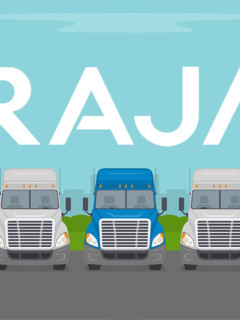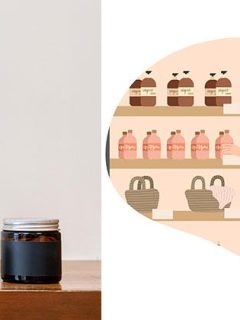Paper as a packaging material is an evergreen. Paper can be used to fill, cushion, insulate, wrap, protect… and it can be recycled after use. An absolutely right and important thing – if the recycled material is reused afterwards. For example, as padding in paper mailing bags!
Paper is the recycling front-runner
The high paper recycling rates speak for a functioning circular economy: In the 28 EU countries, the recycling rate for paper and folding box packaging waste is now 85.8 percent.
Figures like these mean that paper and cardboard are considered by consumers throughout Europe to be the most environmentally friendly type of packaging. So you are not only doing the environment a favour, but also your own corporate image, if you consider paper as an alternative – for example to the film mailing bag. The recycled material, the so-called recyclate, can be excellently reused, especially in the field of environmentally friendly packaging. Now, paper made from virgin fibres has different properties in some respects than paper made from (at least partially) recyclate.
When to use kraft paper, when recyclate?
Kraft paper is the paper grade with the highest strength for the production of e.g. paper sacks, emery paper or shopping bags. It consists of almost 100 % cellulose fibres, only starch, alum and glue are added to achieve surface effects and strength increases. So whenever the aim is to obtain the strongest possible (tear-) resistant, smooth surface, the proportion of recycled paper should be lower. Paper with a correspondingly high recycled content is softer and has a comparatively rougher, more porous surface. This can also play a role in printing or labelling: If an absolutely clear, colourless print image is required, the maximum recyclate content should first be determined step by step in cooperation with the printer. For the vast majority of applications, paper with a relatively high recycled content is now just as suitable as virgin fibre paper.
The paper mailer – kraft or recycled?
A mailing bag has to meet various requirements. It is used to protect items from unauthorised access and damage during transport and to clearly indicate the recipient’s address, thus making the destination of the item known. Particularly clever: make use of the advantages of both types of paper 😉
The Jiffy: Three wins!
The Jiffy green shipping packaging therefore consists of three different “layers” of paper, each optimised for the corresponding demands:#
How stable is a paper mailing bag?
In this unbeatable triple combination, which cleverly makes use of the respective material advantages, heavy and even greasy or oily products can also be shipped due to this very material combination. The outer layer of 90g/m² kraft paper and the reinforced double bottom can withstand a lot during shipping and are still flexible and pliable, just like the 5 mm thick paper padding.
Increasing online sales mean more packaging material
Germans in particular like to order a lot on the Internet. At the same time, consumers are becoming increasingly sensitive when it comes to packaging material. Sometimes customers find inappropriate packaging sizes and, related to that, unnecessarily much cushioning material so annoying that they are reason enough to change suppliers. This also shows that paper generally has a higher acceptance than plastic. In a study (Kantar Emnid), recyclable packaging was an important factor in the purchase decision for 93% of respondents. Ideal: packaging that consists of only one material and can therefore be easily recycled.
This is also in line with the recommendations of the Federal Environment Agency:
- Use of shipping packaging with a high recycled content
- Avoidance of virgin fibre paper
- Avoidance of bleached paper
- Avoidance of composite materials
- Avoiding materials that contain chemicals of concern
- Choosing packaging materials that are easily recyclable
- Recycling of packaging materials
Source: umweltbundesamt.de
What is the consumer willing to do for sustainable shipping packaging?
Sure, packaging made from renewable raw materials and especially those made from recycled or recyclable materials are an important step. But paper should also be used consciously as a shipping and packaging material. At 241.7 kg, per capita consumption in Germany is still higher than in the USA (210.8 kg), not least because of the increasing number of online orders. An increasing number of consumers could envisage paying a deposit in online retail as well, similar to the bottle deposit. Recyclable shipping packaging similar to the bottle deposit system.
On the other hand, a YouGov survey conducted on behalf of Trusted Shops shows that 60% of Germans would like to see more ecological and social awareness when shopping in web shops. But only one in five would be willing to pay more for it. Until these figures converge, however, retailers and manufacturers can also exert influence – for example, by using single-material, recycled and recyclable shipping packaging, such as the Jiffy green shipping bag.














